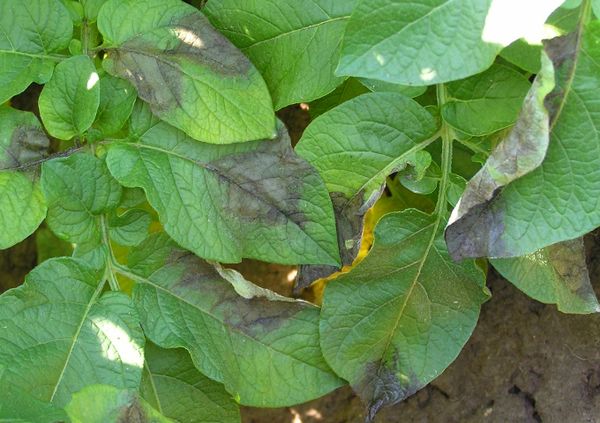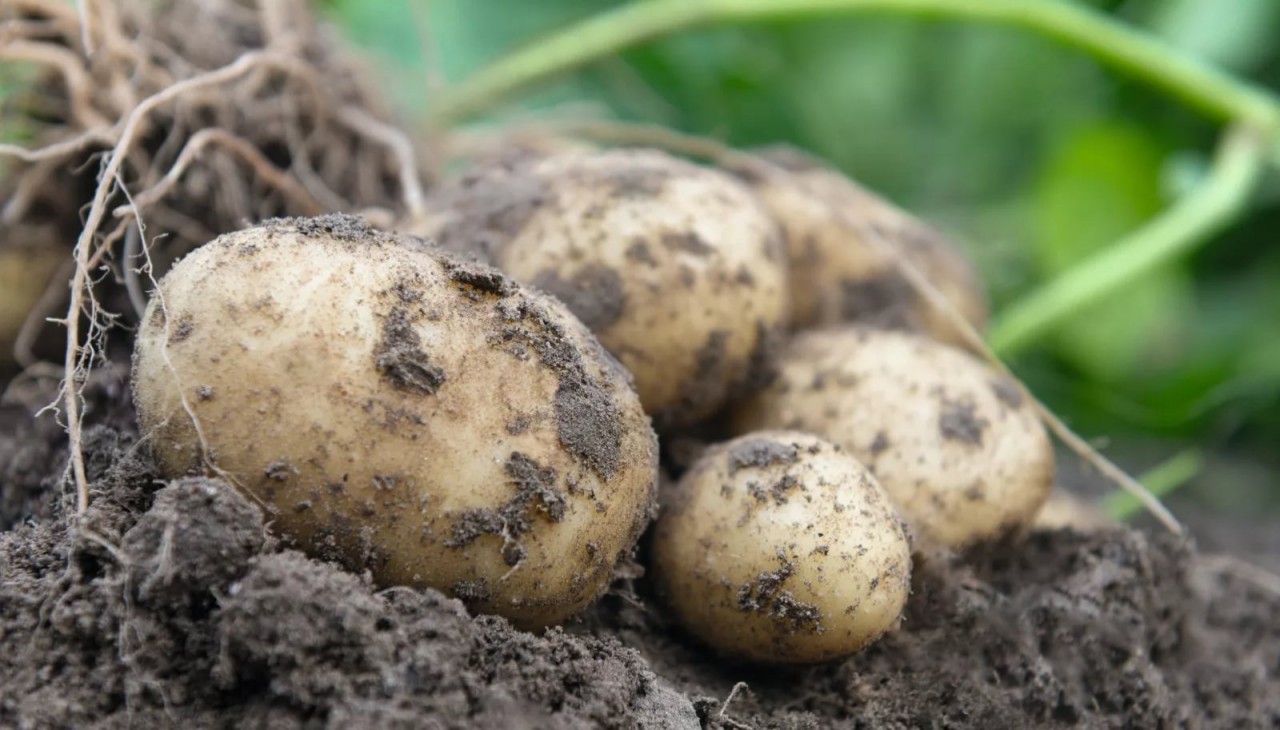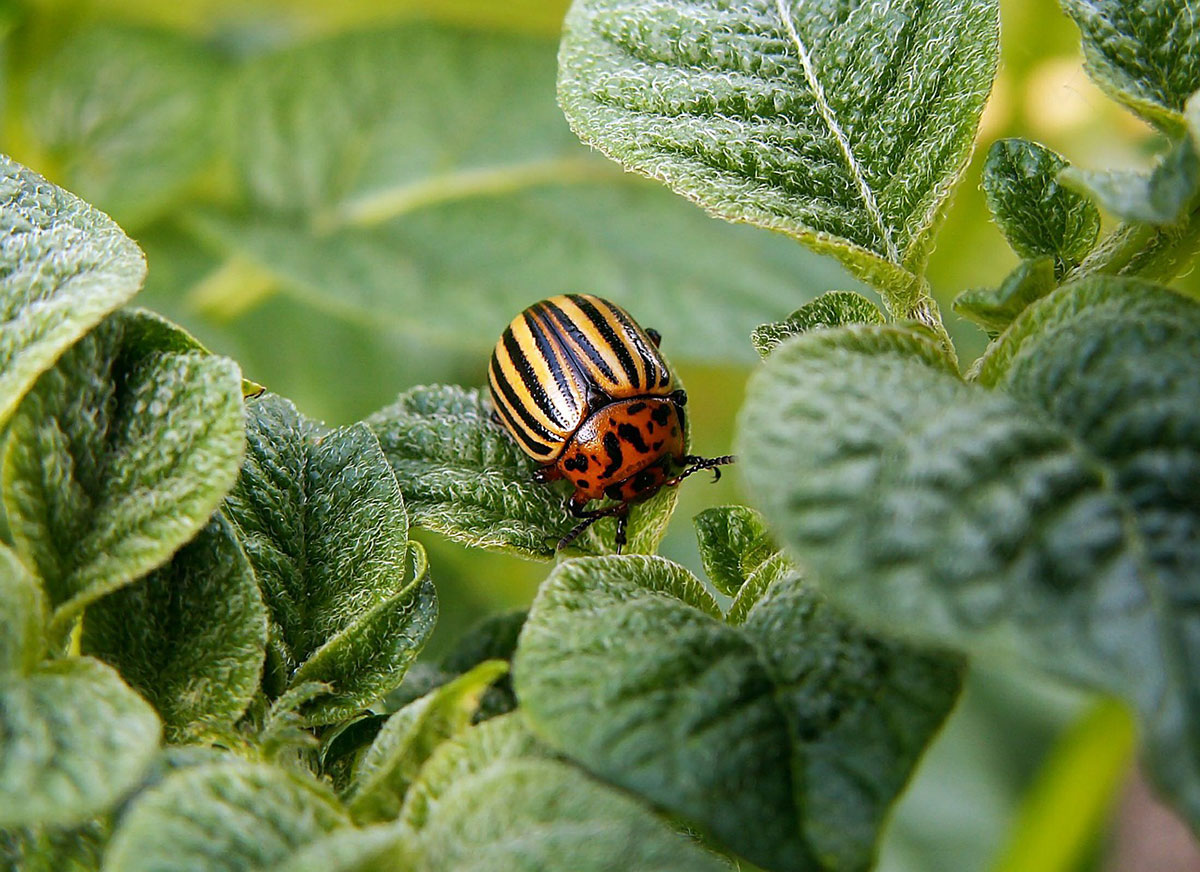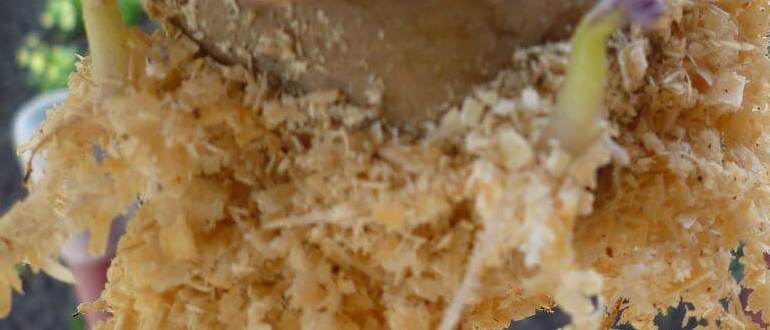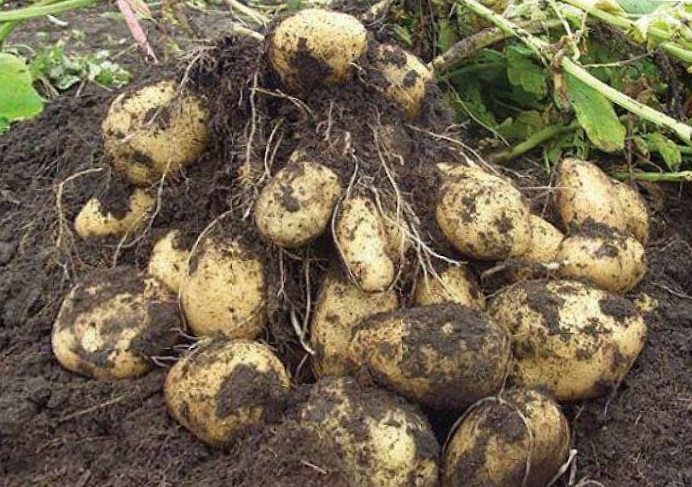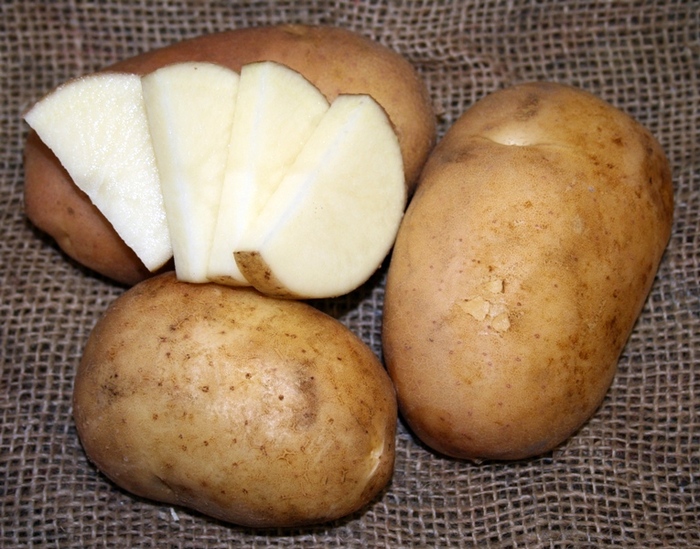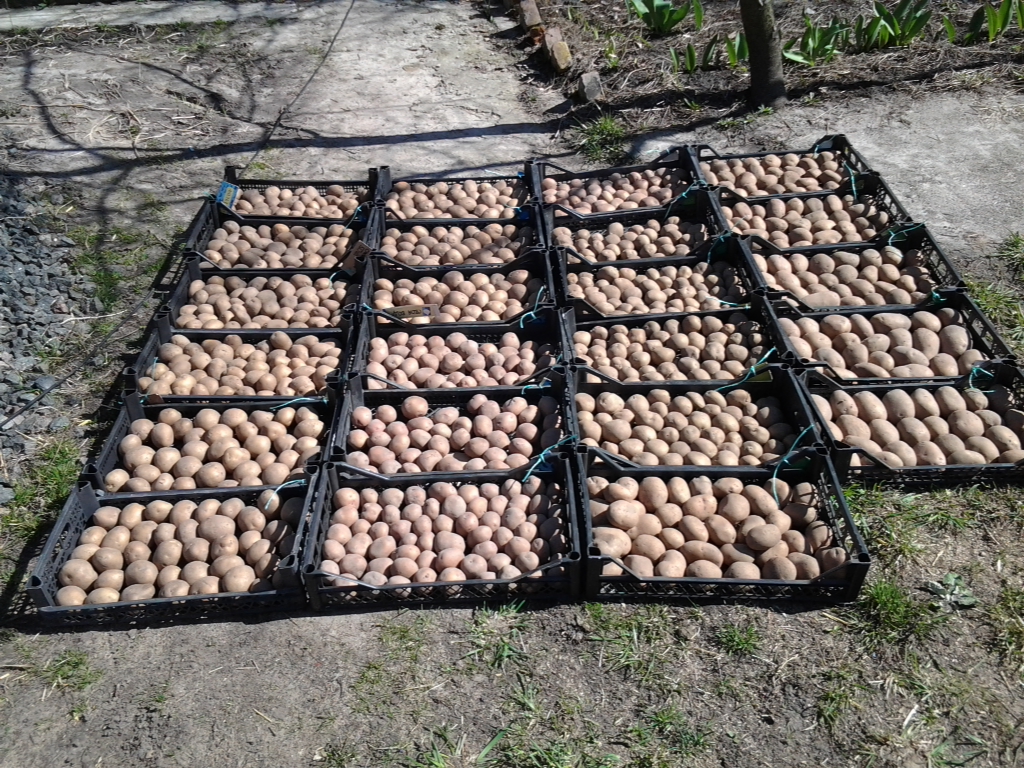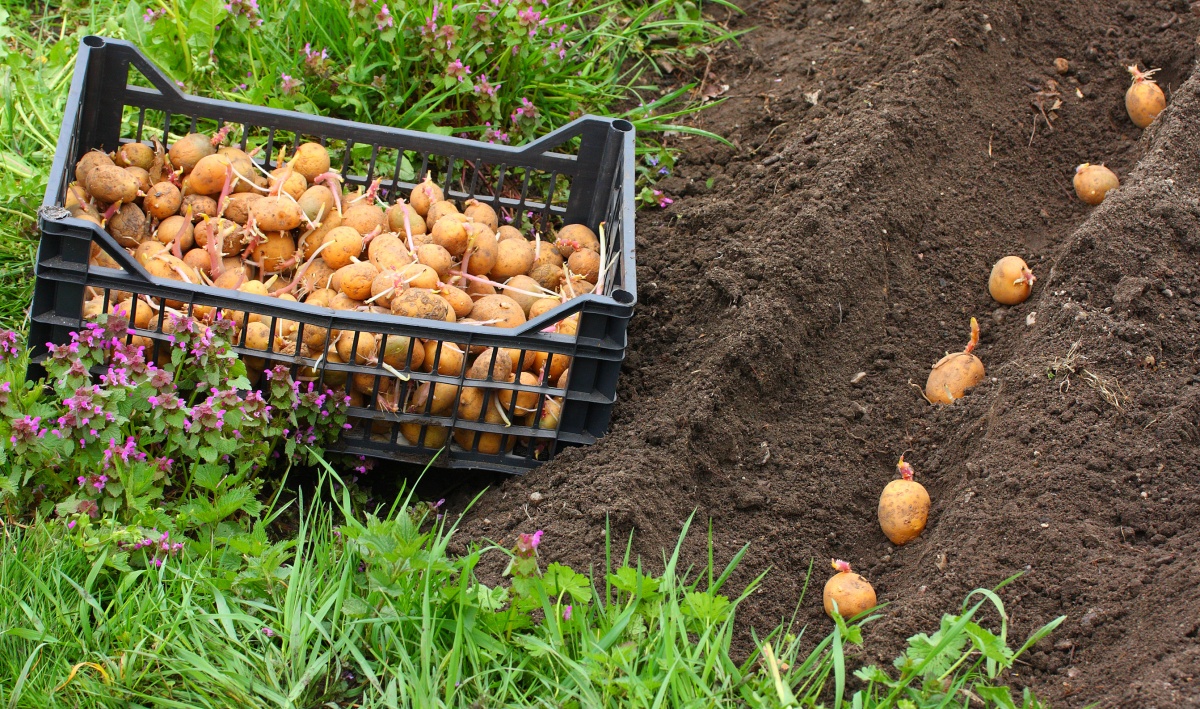Content:
Potatoes in Russia are the first vegetable crop for growing and stocking for the cold season. Due to the use of old planting material or low soil fertility, tubers are exposed to diseases and pests, the amount of the crop is reduced, and it is poorly stored.
Description of culture
During the growing season, potatoes take many nutrients from the soil that are required for their growth. To grow a good crop of potatoes, fertile, light, slightly acidic soils are required. The sites for planting crops are chosen high and sunny. In the lowlands, where melt and rainwater has been standing for a long time, potatoes will rot and be exposed to various infections.
The quality of the crop also depends on the planting material. With prolonged use of the same seed, diseases accumulate in it, and resistance to them decreases, such plants are more susceptible to pest damage.
For a culture, there is a designation for the number of reproductions - the number of plantings of seed from the same plant.
The cultivars are rehabilitated in the laboratory, where microparticles of the plant are separated and grown in a special, sterile environment for obtaining potato minitubers. Minitubers are less than 1 cm in diameter, they are planting material that is clean from disease, which cannot be produced at the household level. Such planting material has a high cost, and its purchase is not always advisable for private cultivation.
The resulting minitubers in the laboratory are then grown in the ground to produce potatoes called "super super elite". In the fourth year of cultivation, the crop becomes "super elite", the fifth - "elite". From the sixth year of cultivation, the seed is called reproduction. It is believed that after the third reproduction is the eighth year of cultivation, the result becomes ineffective due to the degeneration of the beneficial qualities of the potato and the accumulation of many diseases in the tubers.
In order for the potato to show the best qualities of the variety, it is recommended to use seed for planting not lower than the designation "elite".
Diseases
Potatoes are highly susceptible to various kinds of diseases that arise when growing crops in adverse weather conditions, on depleted soils. The causes of diseases also arise from improper planting and care of potatoes.
Fungal lesions
If you ask a gardener what kind of potato disease you know, then you can hear with confidence - late blight. Late blight is a fungal disease that manifests itself on the lower part of the leaves and spreads to the entire tops, can destroy it completely in a few days. There are varieties whose tubers are resistant to the disease, but during a rainy and cold summer, late blight can affect the plant at the beginning of the season, when the tubers are not yet sufficiently formed.
When late blight appears, potatoes are immediately sprayed with preparations containing copper. The limitation in the use of copper-containing liquids is the air temperature over 30 ° C.Spraying is stopped 20 days before harvest.
Common fungal infections also include:
- fusarium wilting;
- alternaria.
Fungal diseases of potatoes appear during high air humidity, during prolonged rains, from poor ventilation of the tops. Fungal manifestations are visible on the leaves, which acquire a brown, rusty, purple color, then die off within a short time. A lesion such as fusarium most of all affects not only the green part of the plant, but also the tubers, on which, during storage, voids and rot of white and brown color appear.
Viral lesions
Potato diseases are also viral in nature. Plants infected with a virus can be distinguished by unhealthy leaves that look underdeveloped, wrinkled, and have a raised edge. The virus can also manifest itself by the appearance of spots on potato tubers. When infected bushes are found, they are not treated, but removed and burned. Tubers that have emerged from an unhealthy bush are not used in further planting, even if the skin looks clean, without visible spots.
Black spots on potatoes occur when infected with rhizoctonia or scab. Dots and growths of a rose appear on the peel. The disease occurs when growing potatoes on heavy soils and in unfavorable damp weather.
Bacterial lesions
Bacterial diseases include various rot:
- annular;
- brown;
- wet.
Rot causes damage to tubers from the inside, which may look healthy on the outside. The lesions make the potato unedible. Most often, bacteria appear when planting low-quality seed and during storage.
Non-infectious lesions
There are non-infectious potato diseases that occur due to imbalance of minerals in the soil. Potatoes do not like fresh organic matter, from which there is an excess of nitrogen and a lack of potassium in the soil. Tubers can be susceptible to rotting due to damage during harvest and transport.
Diseases characteristic of certain crops accumulate in the soil after growing vegetables, therefore, when planting potatoes, crop rotation is observed and try not to plant closely related crops, such as tomatoes, peppers and eggplants nearby.
Pests
Pests affect both the aerial parts of potatoes and tubers. One of the known pests, including all nightshade crops, is the Colorado leaf beetle.
The wireworm, the larva of the click beetle, bothers potato tubers, the life period of which is from 2 to 5 years. The larva feeds on tubers, making passages in them, which are subsequently more prone to rotting. Similar damage is caused by the potato moth, which destroys, including the leaves. Tubers damaged by moths are not stored with healthy ones and are not used for sowing.
The culture is also attacked by various flea beetles, caterpillars and slugs. Insecticides are used for mass destruction of pests.
Planting healthy planting material, which is pre-planted in the light and germinated, becomes the prevention of pests. Tubers are planted in the soil with a bedding of more than 7 cm, seedlings down, they follow the rules of agricultural technology.
Potatoes grown on depleted soils, without maintaining crop rotation, are more susceptible to infection. By renewing planting material and taking preventive measures to destroy various diseases and pests, you can get high yields of potatoes.

